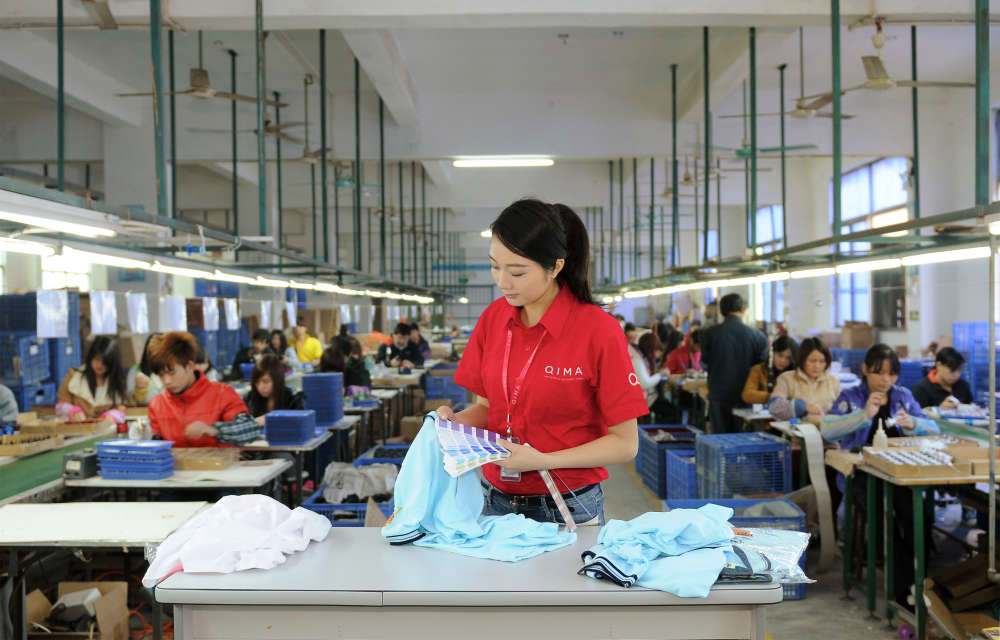

A quality control checklist is an essential QC tool for any brand or manufacturer that cares about the quality of its products. It is a list of requirements and specifications for particular products, drawn up by the brand and provided to quality control staff for use during an on-site product inspection. This article will look at what goes into a quality control checklist, how quality control checklists are used for textile and apparel inspections, and why your brand needs them.
A quality control checklist—which can also be referred to as a QC checklist or an inspection criteria sheet (ICS)—is a list of product requirements, specifications and checks, used during quality control. It is a document created by the brand to clearly outline what they want their product to be, and what quality control procedures they require during an on-site product inspection. Quality control checklists can be used in any industry. However, in this article we will be looking specifically at their use in the textile and apparel sector. A brand can create a garment quality control checklist on their own, or work with their quality control provider to design one. In most cases, QC checklists don’t need to be created from scratch: professional quality control providers tend to offer many ready-made checklists that a brand can customize to suit their specific requirements. A quality control checklist will normally detail product specifications, packaging and labeling requirements, instructions for on-site checks, and a definition of what constitutes a pass or a fail for a product or shipment.
Any brand that cares about its reputation must care about product quality. Even a simple garment like a t-shirt must meet dozens of criteria, from material and workmanship, to packaging, labeling, and more. In order to ensure that your supplier is manufacturing your apparel to your specifications, you must inform them of your requirements. Meanwhile, your quality control team must be informed about the textile tests you want to see done during an on-site inspection. A quality control checklist is the best way to organize and relay this information to all the relevant parties. By providing your QC checklist to your apparel supplier, you clearly communicate your requirements, which helps prevent defects and mistakes during manufacturing. In turn, by equipping on-site inspectors with the same checklist, you make sure that any defects that may have occurred are caught before the product leaves the factory. Furthermore, if you buy from multiple suppliers, using quality control checklists for your products helps ensure uniform product standards throughout your entire supply chain.
A typical garment quality control checklist will include information about product requirements, packaging requirements, and on-site testing procedures (including any equipment to be used). The more detailed the information in your QC checklist, the more likely it is that your requirements will be communicated clearly to your supplier and quality control personnel — and therefore, the more closely the finished product will meet your standards. It’s also a good idea to have the checklist translated into the supplier’s language to avoid misunderstandings. Here are examples of what kind of items go into each of the categories in a QC checklist for garments:
Product requirements
Packaging requirements
Far from being an afterthought, packaging is a very important part of your product’s journey through your supply chain: from ensuring your product isn’t damaged in transit, to optimizing your shipping costs, to meeting packaging and labeling regulations in your chosen market. Packaging requirements included in a garment quality control checklist usually include:
On-site tests and checks On-site quality control checks can involve dozens of different tests to ensure the garment meets your specifications and quality standards. Depending on the garment type and material, these can include:
Quality control tools and instruments A garment quality control checklist also gives instructions on the instruments that should be used to carry out measurements, and on who should supply those instruments. Small and portable tools are usually carried by inspectors, while larger ones, such as metal detectors, may be provided by the factory. It is important to know in advance what tools are necessary, and who will be providing them. Some typical tools used to conduct garment quality inspections include:
Why is a garment quality control checklist important for textile and apparel inspections?
Communicating your product requirements clearly to your supplier and your quality control team is a crucial step in ensuring product quality throughout your supply chain. A QC checklist does exactly this, and ensures that:
In summary, a quality control checklist is a critically important document that enables you to clarify your quality expectations before, during, and after production — in order to deliver products that meet your standards and your customer’s expectations.
At QIMA, we have the knowledge and expertise to advise you on quality control procedures and product standards for your textiles and apparel, whatever your destination market. We offer thousands of off-the-shelf quality checklists that you can customize to suit your specific products, and will be happy to work with your quality team to design quality control procedures perfectly tailored to your business. Our quality control inspectors can be on-site anywhere in the world within 48 hours to carry out inspections at your supplier’s factory according to your specific requirements. Detailed reports with pictures are delivered to you the same day, giving you all the information you need to make an informed pass/fail decision on the shipment. Contact us for more information on how we can help ensure your textile and apparel products meet your customer’s expectations.